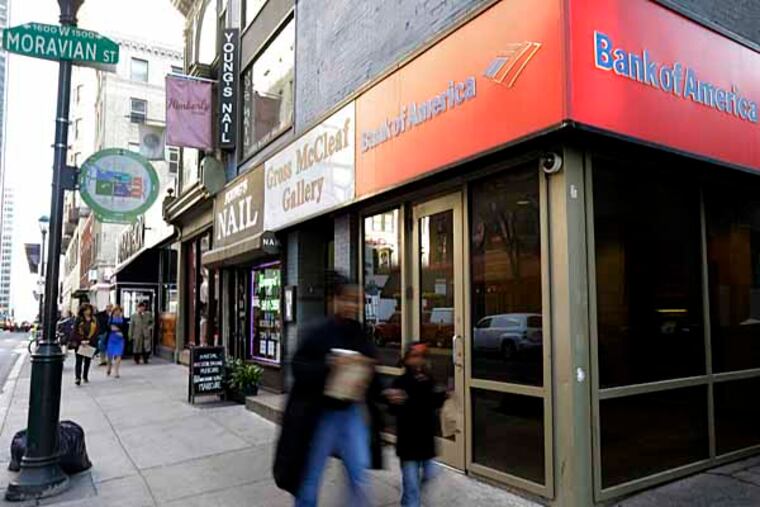Fewer U.S. banks are failing
Banks end 2012 with their best profits since 2006, and have been lending more freely.

WASHINGTON - U.S. banks are ending the year with their best profits since 2006 and fewer failures than at any other time since the financial crisis struck in 2008. They are helping to support an economy slowed by high unemployment, flat pay, sluggish manufacturing, and anxious consumers.
Signs of the industry's gains:
Banks are earning more. In the July-September quarter, the industry's earnings reached $37.6 billion, up from $35.3 billion a year earlier. It was the best showing since the July-September quarter of 2006, long before the financial meltdown. By contrast, at the depth of the Great Recession in the last quarter of 2008, the industry lost $32 billion.
Banks are lending a bit more freely. The value of loans to consumers rose 3.2 percent in the 12 months that ended Sept. 30 compared with the previous 12 months, according to data from the Federal Deposit Insurance Corp. More lending fuels more consumer spending, which drives about 70 percent of economic activity. At the same time, overall lending remains well below levels considered healthy over the long run.
Fewer banks are considered at risk of failure. In July through September, the number of banks on the FDIC's confidential "problem list" fell for a sixth straight quarter. These banks numbered 694 as of Sept. 30 - about 9.6 percent of all federally insured banks. At its peak in the first quarter of 2011, the number of troubled banks was 888, or 11.7 percent of all federally insured institutions.
Bank failures have declined. In 2009, 140 failed. In 2010, more banks failed - 157 - than in any year since the savings and loan crisis of the early 1990s. In 2011, regulators closed 92. This year, the number of failures has trickled to 51. That's still more than normal. In a strong economy, an average of only four or five banks close annually. But the sharply reduced pace of closings shows sustained improvement.
Less threat of loan losses. The money banks had to set aside for possible losses fell 15 percent in the July-September quarter from a year earlier. Loan portfolios have strengthened as more customers have repaid on time. Losses have fallen for nine straight quarters. And the proportion of loans with payments overdue by 90 days or more has dropped for 10 straight quarters.